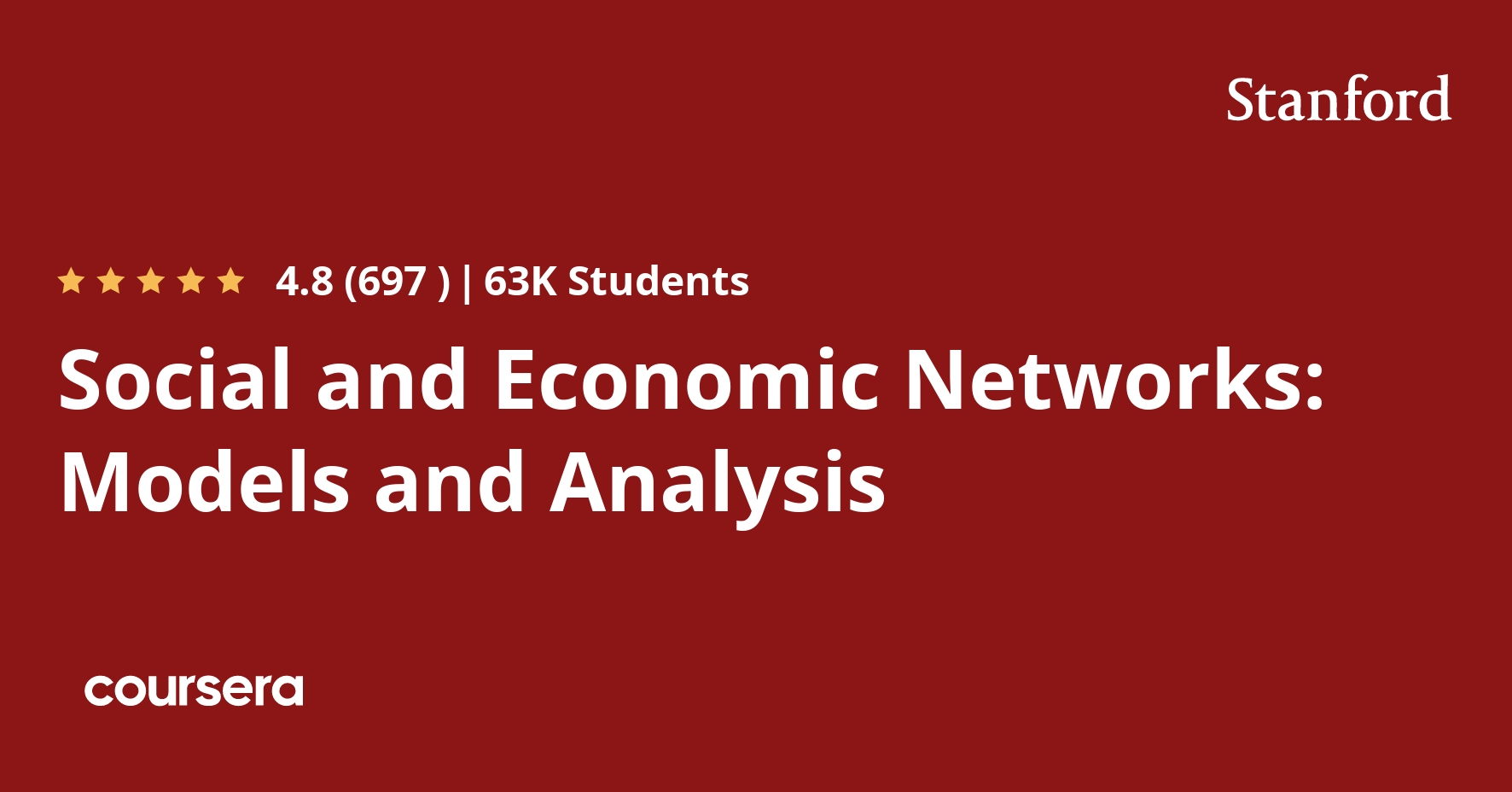Description
Learn how to model social and economic networks and their impact on human behavior. How do networks form, why do they exhibit certain patterns, and how does their structure impact diffusion, learning, and other behaviors? We will bring together models and techniques from economics, sociology, math, physics, statistics and computer science to answer these questions.
The course begins with some empirical background on social and economic networks, and an overview of concepts used to describe and measure networks. Next, we will cover a set of models of how networks form, including random network models as well as strategic formation models, and some hybrids. We will then discuss a series of models of how networks impact behavior, including contagion, diffusion, learning, and peer influences.
You can find a more detailed syllabus here: http://web.stanford.edu/~jacksonm/Networks-Online-Syllabus.pdf
You can find a short introductory videao here: http://web.stanford.edu/~jacksonm/Intro_Networks.mp4
What you will learn
Introduction, Empirical Background and Definitions
Examples of Social Networks and their Impact, Definitions, Measures and Properties: Degrees, Diameters, Small Worlds, Weak and Strong Ties, Degree Distributions
Background, Definitions, and Measures Continued
Homophily, Dynamics, Centrality Measures: Degree, Betweenness, Closeness, Eigenvector, and Katz-Bonacich. Erdos and Renyi Random Networks: Thresholds and Phase Transitions
Random Networks
Poisson Random Networks, Exponential Random Graph Models, Growing Random Networks, Preferential Attachment and Power Laws, Hybrid models of Network Formation.
Strategic Network Formation
Game Theoretic Modeling of Network Formation, The Connections Model, The Conflict between Incentives and Efficiency, Dynamics, Directed Networks, Hybrid Models of Choice and Chance.








